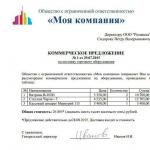Eating sold out: the markup on the most necessary products reaches 50%
And cheating on clothes and alcohol can exceed 300%
Prices are inexorably rising, and the incomes of the population are not very good: now half the salary is spent on food alone, as sociologists have calculated. Yes, and updating your wardrobe during a crisis is not particularly pampered: you have to wait for sales, otherwise “clothes” can not afford. Alcohol is getting more expensive, so even drinking out of grief is expensive. But our wallets are obviously emptying in someone's favor: manufacturers and stores make huge profits from markups on goods that increase their real value by 2-3 times. "MK" tried to figure out how trade profits from buyers.
The distribution chain of each of our purchases looks like this: manufacturer - distributor - retail. Of course, all participants in this scheme strive to earn more, so at each stage the initial cost of the product increases markedly. The cost price itself consists of two components: the cost of raw materials and the cost of production (salary to employees, electricity, equipment maintenance). In addition, the manufacturer pays taxes and excises, and then sells the goods to a wholesale intermediary or directly to retailers at the selling price, including their profit percentages. As experts explain, now the retail market is dominated by retail - large retail chains that are purchased directly from the manufacturer in order not to overpay for the services of wholesalers and thus maintain relatively low prices due to large volumes of turnover. And small shops continue to buy at wholesale bases or from intermediaries, so the cost of goods in them is often higher. At the same time, retail is not limited in any way in inflating prices, except ... no, not conscience, but competition: if they don’t buy, it means that it’s cheaper in a nearby store. If another store is too far away or closes early, then all the cards are in the hands of the merchants: as long as there is demand, prices can be assigned the most “biting”. We compared prices in different stores and found out that the cost of completely identical products can differ by 20-30%, which go into the pocket of retailers.
Grocery mayhem
According to the harsh laws of trade, the fastest rise in prices always occurs for food products - a person cannot do without them and will buy under any circumstances. Therefore, in a free market, producers and shops can speculate on the price of products as they wish. “Prices are now not limited by the state, as in the days of the USSR, but the supply is not limited either. Therefore, now the main protector of the consumer is competition. If you do not like the price in one store, we go to another. Fortunately, there are shops at every turn in the city, and large hypermarkets are within transport accessibility. However, in a single general store for the whole village, the cheating can be 100-200%, ”Peter Shchelishch, chairman of the Consumers Union of Russia, told MK.
But how effective is competition in the struggle for affordable prices for consumers? For the purity of the experiment, we visited three stores in the capital that are accessible to a resident of one block: a retail chain of the grassroots segment of the “neighborhood” format, a non-chain store “Products 24” near a bus stop, where there is a lot of people traffic, and one of the largest hypermarkets, to which from the nearest stop rides a free bus. We also studied the price list of one of the largest wholesale depots in Moscow - a non-chain retail supplier.
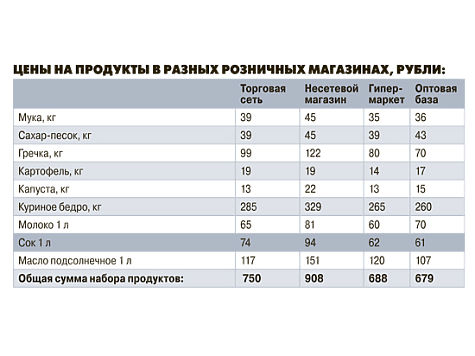
As can be seen from the table, even in the stores closest to each other, prices can differ significantly, and the total difference in the cost of the set of products in question is about 300 rubles - that's your competition ... But here you have to choose: run into the store on the way, but overpay, stand in a long queue at a low-price retail chain, but save money, or spend several hours on a trip to a hypermarket in search of the same savings.
However, even the lowest prices in retail are much higher than the cost at which products are sold from enterprises, and retail earns its "penny" on this difference. The report “How prices and quality of foodstuffs are formed (consumer's point of view)”, prepared by the Consumers Union of Russia, contains data on the shares of production costs, intermediary margins and profits of a retail organization in the final price of various products. Thus, the cost of bread is 37% of the price, milk - 27%, frozen fish - 24%, sunflower oil and meat products - no more than 10%. Intermediaries add another 25-30% to the price of flour, from which bread is made, sunflower oil - 27%, fish - 20-23%, pasta - 19%, sugar - 16%. Finally, the store makes a margin of 20 to 50%, and from the sale of pasta receives 9% of net profit, fish - 7-10%, milk, sunflower oil, eggs, sugar, flour - about 6%. Note that all these figures are relevant for domestically produced products that are not imported into Russia by import.
The size of the markup in retail depends on the category of products and industry specifics of production, says Dmitry Vostrikov, director of Rusprodsoyuz. For example, the markup on flour in retail is more than 50% - this is one of the largest indicators among products. “Production capacity at flour mills is twice the demand, and due to high competition, the mills operate on the verge of profitability, earning only 1-4% profit. The profitability of chicken meat production is somewhat higher, and the price for the population is more affordable. This is due to the fact that the bird gains marketable weight in 2-3 months of fattening, and its cost is much lower than pork, lamb and beef,” the expert said.
The cost of the product depends on raw materials prices, the depth of product processing, packaging and organization of business processes, the workload of production, the head of Rusprodsoyuz emphasizes. According to him, the real purchasing power of the population and competition in the category also affect the selling price and profitability.
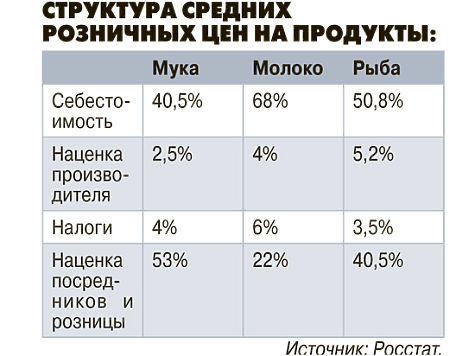
If we represent these values in monetary terms, then using the example of a chicken with an average cost of 133 rubles per kilogram, the retail price structure will look like this: cost price - 87.5 rubles, manufacturer's markup - 10 rubles, taxes - 8 rubles and retail markup - 27.5 ruble.
Of course, one can ask a rhetorical question: isn't it a shame for manufacturers, intermediaries, retailers, as well as the state with its taxes to take considerable interest from citizens in excess of the cost price? But in fact, it turns out that an impressive markup accumulates in the sum of the margins of each participant in the distribution chain. Even consumer rights advocate Petr Shchelishch is in no hurry to accuse the food industry of excessive greed. “Contrary to stereotypes, the food industry is one of the lowest margin industries, in which the profitability of producers is higher than retailers - 6–7% of net profit for enterprises versus about 3% for trade. However, retail is by no means in poverty: due to the turnover, the amount of net profit is considerable,” the expert summed up.
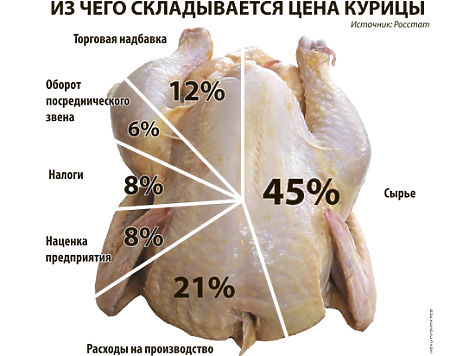
Excise tax is more expensive than vodka
In 2016, the Russian budget received 1.3 trillion rubles from excises - a huge figure, given that these funds were actually withdrawn from consumers' pockets. An excise is an indirect tax paid by manufacturers of consumer goods (alcohol, tobacco, gasoline), which is included in the selling price and, accordingly, the retail price of the goods. Excises are an important source of income for the federal treasury, only because of it the taxable goods are very expensive: sometimes the amount of the tax is three times the cost of the product. An example of such "unfair" pricing is vodka.
According to Rosstat, the average price of a 0.5 liter bottle of vodka in Russia is 280 rubles. It takes 48 rubles to produce it - this is the cost, which includes the cost of raw materials, packaging and other expenses, including advertising. Plus, the manufacturer makes his markup - about 11 rubles. When a bottle goes to retail, its price increases by an average of 89 rubles. The remaining 132 rubles is an excise tax levied by the state, almost equal to the cost and markup of the store combined. Thus, for a traditional Russian strong drink, we overpay almost 5 times, if we start from the cost price.
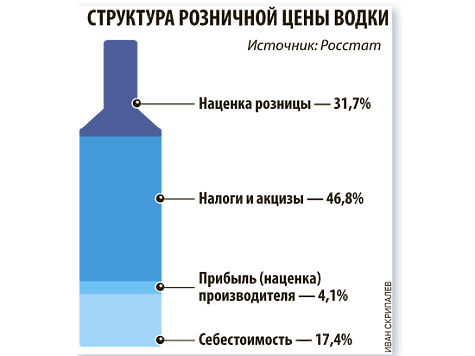
It is curious that the range of prices for vodka in Russian stores is very large, despite the fact that since 2010, in order to combat illegal products, the state has set a minimum price for this alcohol - 190 rubles per half liter. Nevertheless, in retail chains you can see vodka for 191 rubles, while a little further there will be a beautiful bottle with exactly the same “contents”, but for 500 rubles. Despite the tempting inscriptions on the label of expensive vodka from the series “made using deep cleaning technology” or “made from melt water from the top of Everest”, it is made from the same raw materials (alcohol) as cheap, and is subject to the same excise tax, the director explained Center for the Study of Federal and Regional Alcohol Markets (CIFRRA) Vadim Drobiz, explaining the difference in price. “Buying a premium product for 300 rubles or more, consumers pay for image and self-respect. The director of the company on an SUV will not drink the cheapest vodka! To some extent, the high price of an expensive product subsidizes the low cost of its economical counterpart. At the same time, the cost of premium vodka is higher, but not at the expense of raw materials, but at the expense of advertising, packaging, marketing - everything that makes the consumer buy this product for a lot of money, ”the expert believes.
Expensive what is branded
According to experts in the field of trade, the fashion industry is considered the most profitable industry. In clothing and footwear stores, the markup on goods can exceed their selling price by 10–20 times, and all because we are ready to overpay for the brand. Business Insider magazine conducted a study in which they identified 37 products with the highest markup. It turned out that the list included mostly wardrobe items. For example, branded sunglasses are leading in terms of margins - plus 1329%. Women's underwear is sold at 1100% above the cost, and jeans on the shelves are 650% more expensive.
At the same time, 85% of clothing and footwear in the Russian market is represented by imported goods. They enter our stores mainly from Southeast Asia, having overcome customs and long distances. But logistics and "customs clearance" are two serious items of expenditure in the formation of the retail price for all imported goods: on average, duties, taxes and delivery take from 40 to 55% of the original cost of the goods. Therefore, many advanced fashionistas prefer to buy abroad: the difference in price for the same thing in the collection of a global brand can be 30-50%. And thanks to the tax free system, you can also partially refund the value added tax that residents of the country pay, while foreigners are not required to do this.
At the same time, in the wake of import substitution and the fall of the ruble in the past two years, some global brands have opened their production in Russia. As Igor Ulyanov, executive director of Soyuzlegprom, told MK, it has become more profitable for many companies to sew in Russia than in China. “In recent years, the level of wages in China has increased: a seamstress there receives about $500 a month, and her Russian colleague - 12,000 rubles, that is, about $200. Reducing the cost of wages affects the cost of goods downward, but the final price is formed by brands, depending on their markup policy,” said an industry representative. As for Russian-made clothing and footwear, now many enterprises operate with a yield of no more than 3-5%, he noted. At the same time, retailers on clothes “made in Russia” earn much more than manufacturers, in contrast to the food industry. “Stores lay a net profit of at least 20-30%, and even this seems to them not enough, since in the “fat years” the profitability of the clothing and footwear business was 100-200%,” the expert added.
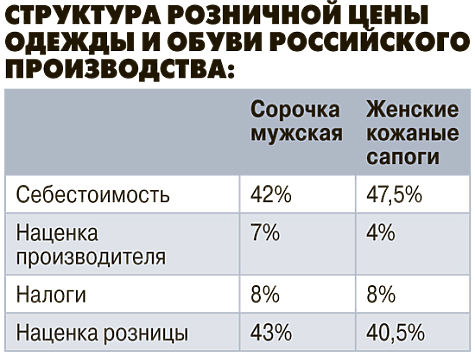
Why do we overpay, as the MK study showed, by two, three or more times even for the most ordinary goods? The laws of the free market dictate their own rules of trade, and they are not always in favor of the consumer. Once there is demand, sellers will not reduce prices. At the same time, the situation on the Russian market is exacerbated by domestic specifics: long distances and complex logistics, as well as ill-conceived and confusing taxes. All these misfortunes are also shifted to the shoulders of the consumer. It is not necessary to count on the fact that the state will put things in order with prices in some administrative way. So, all hope for the development of competition. But the previous quarter of a century of building a market economy in our country clearly did not justify this hope...
